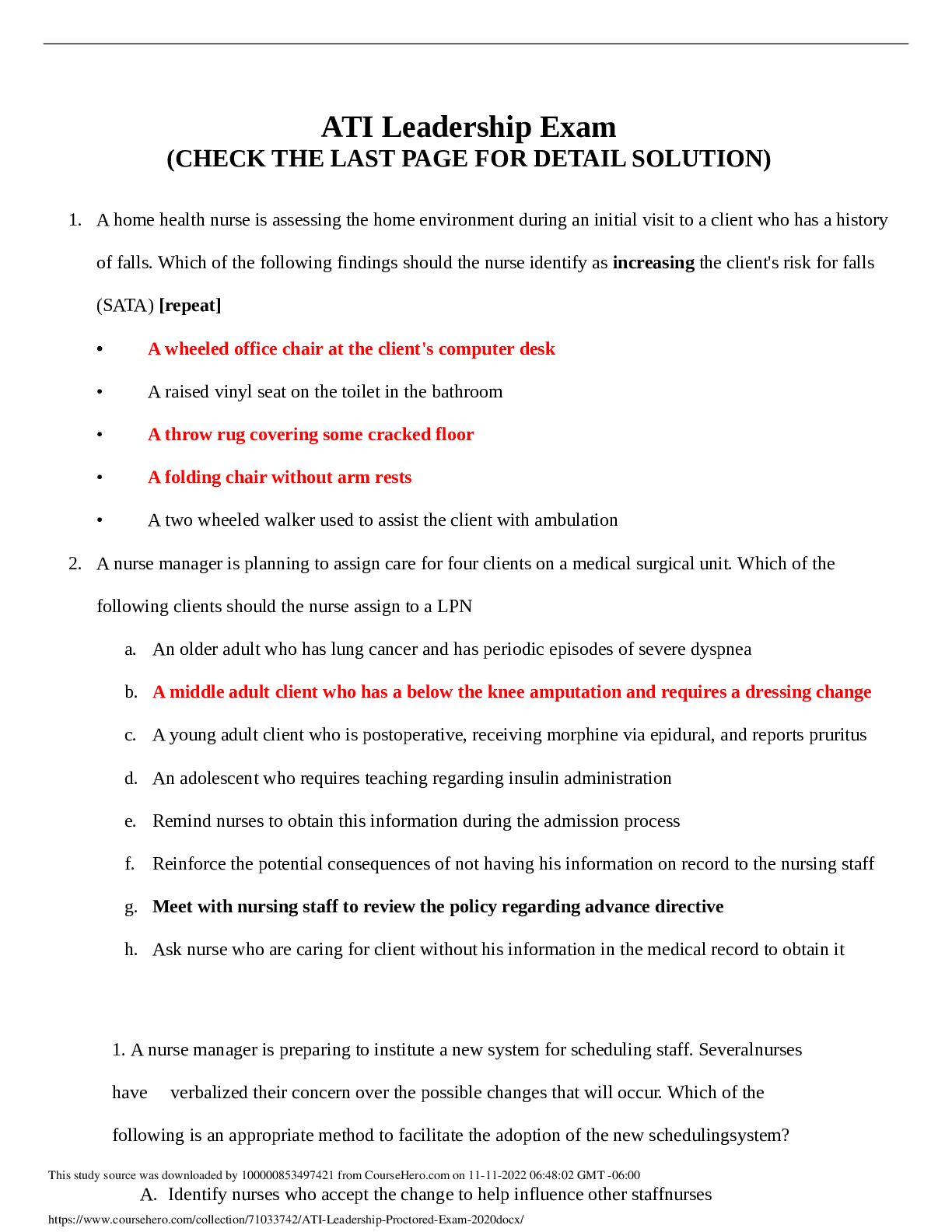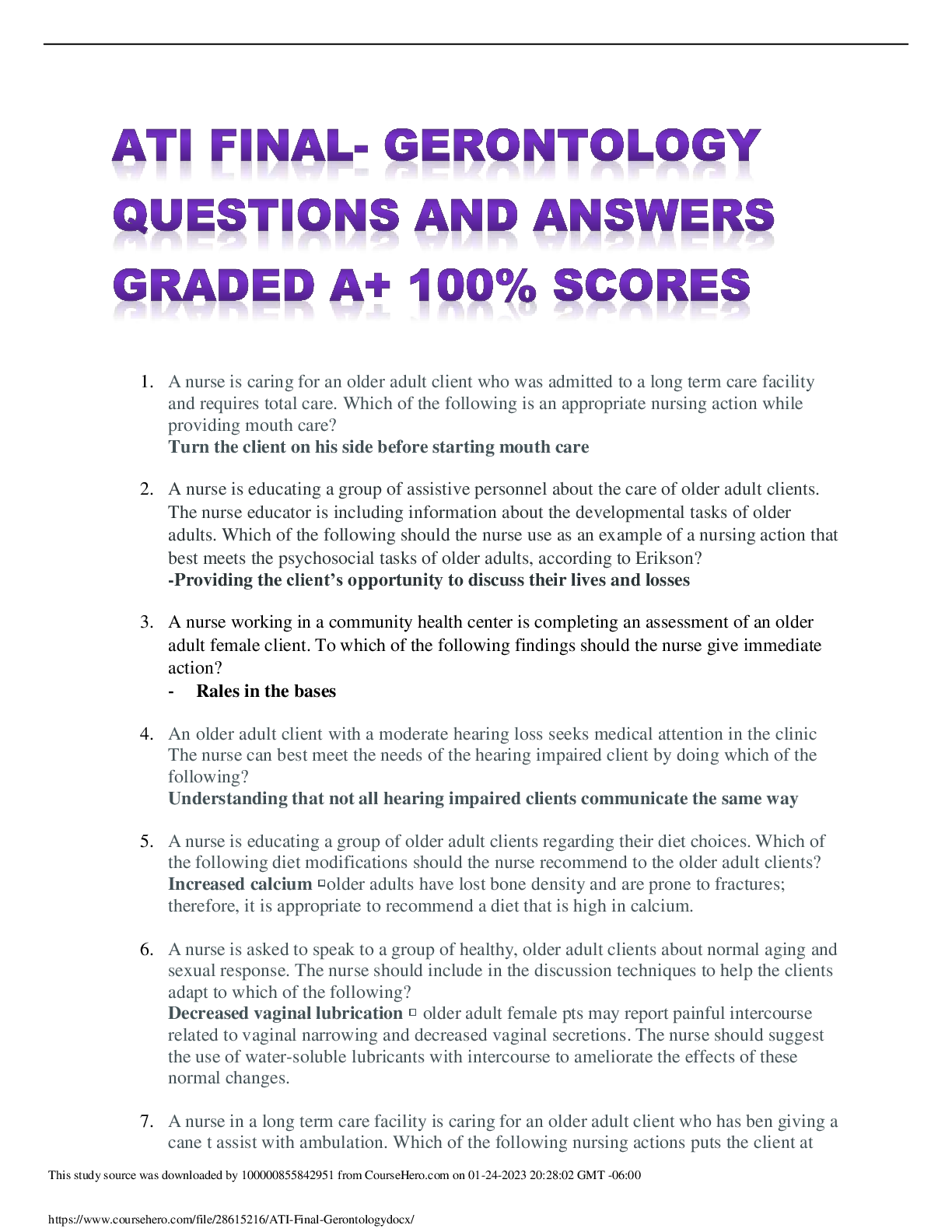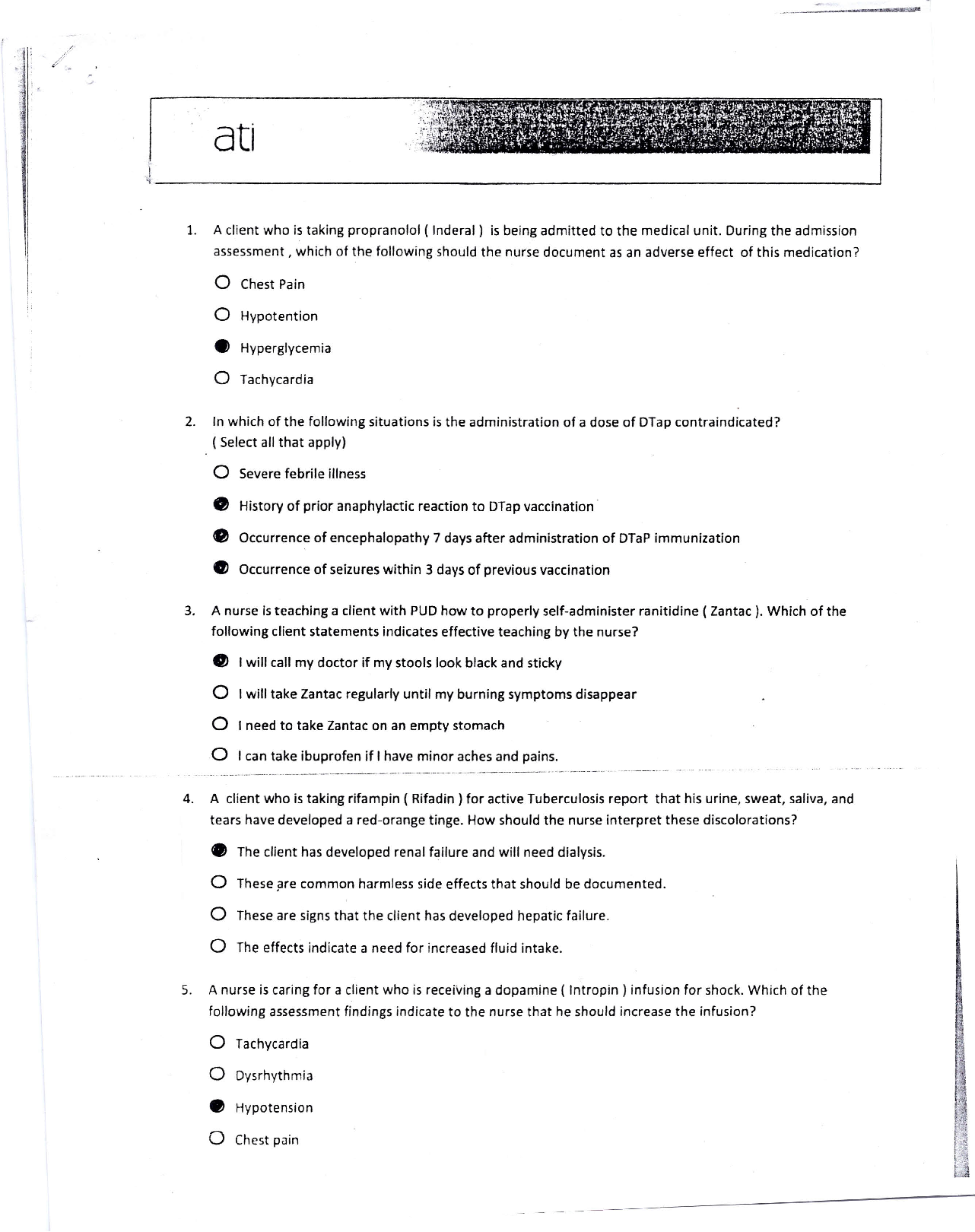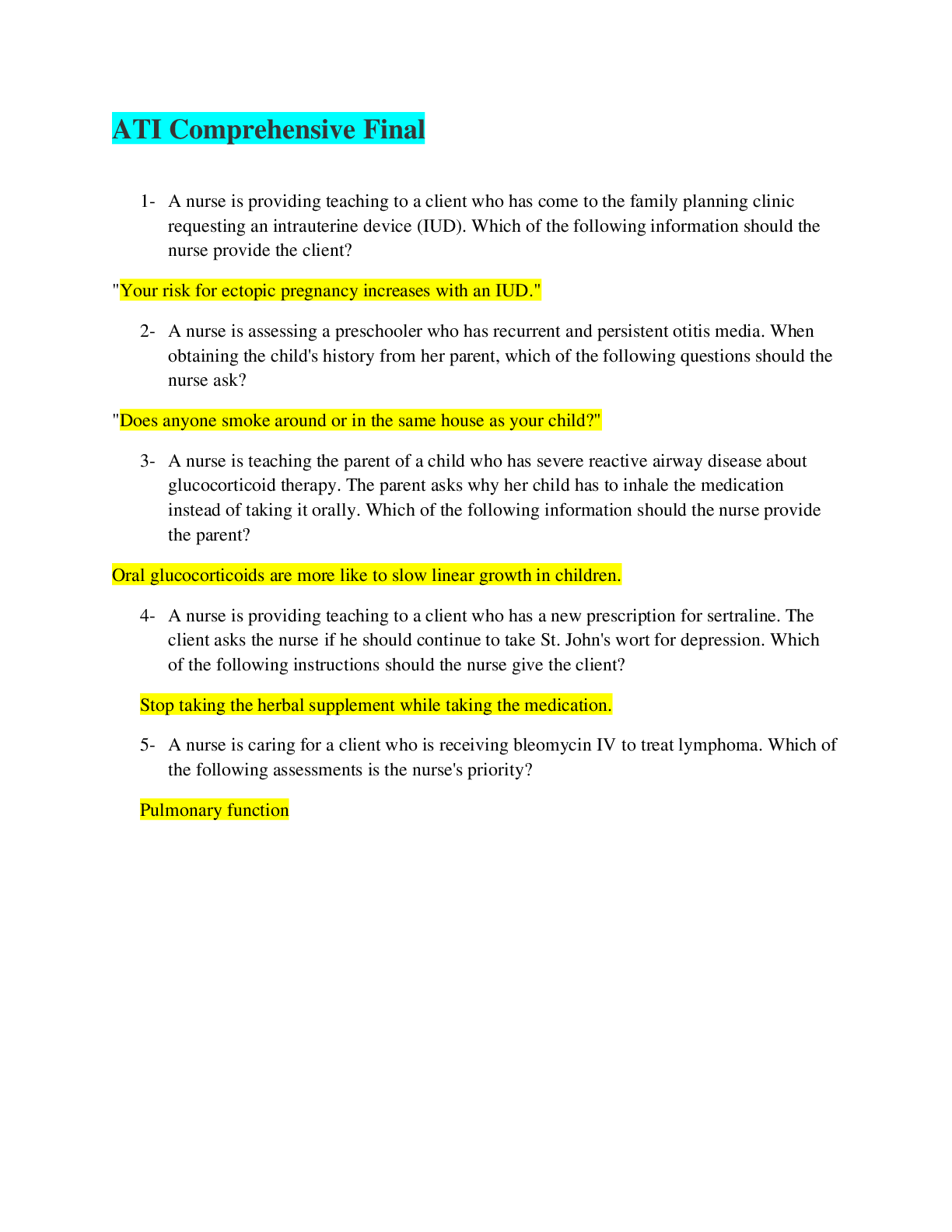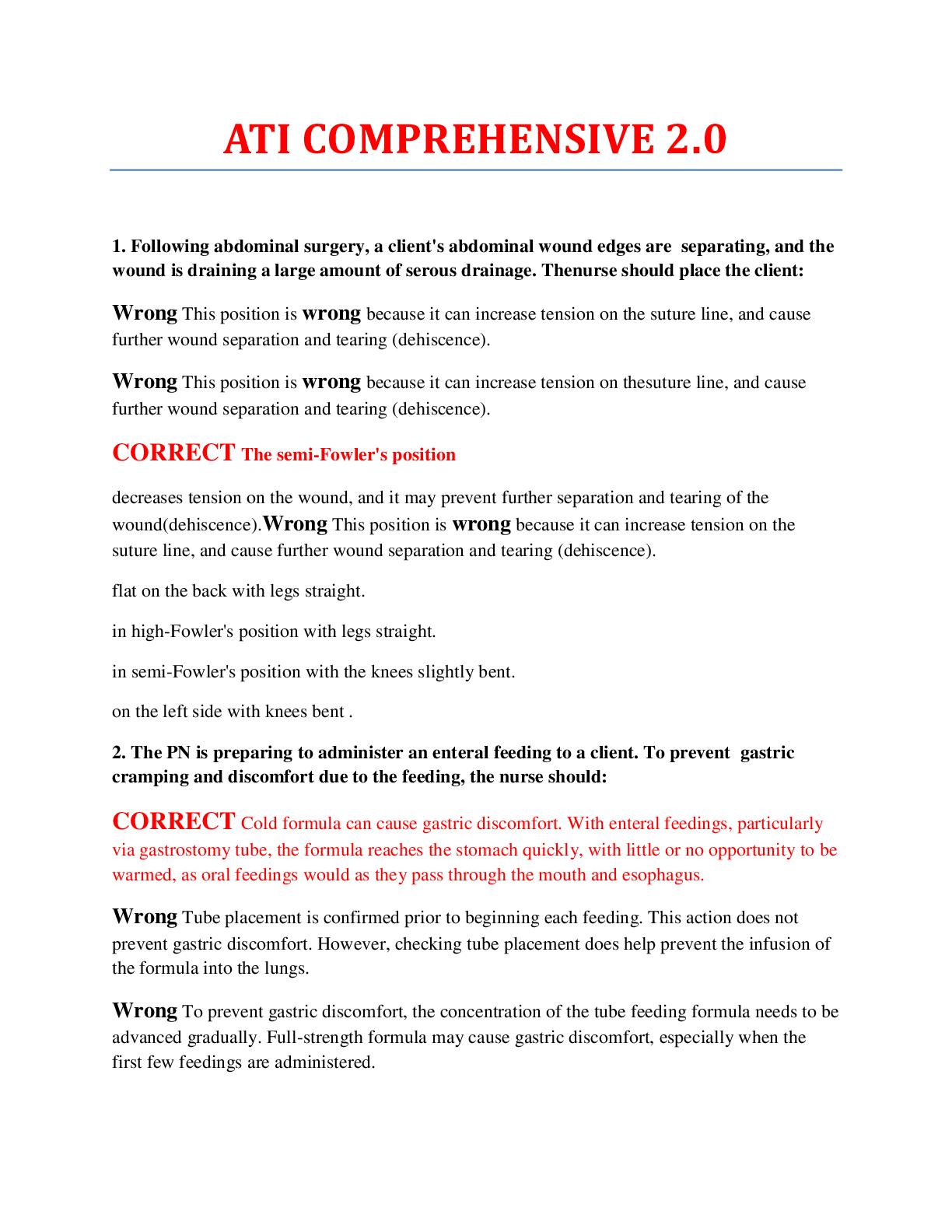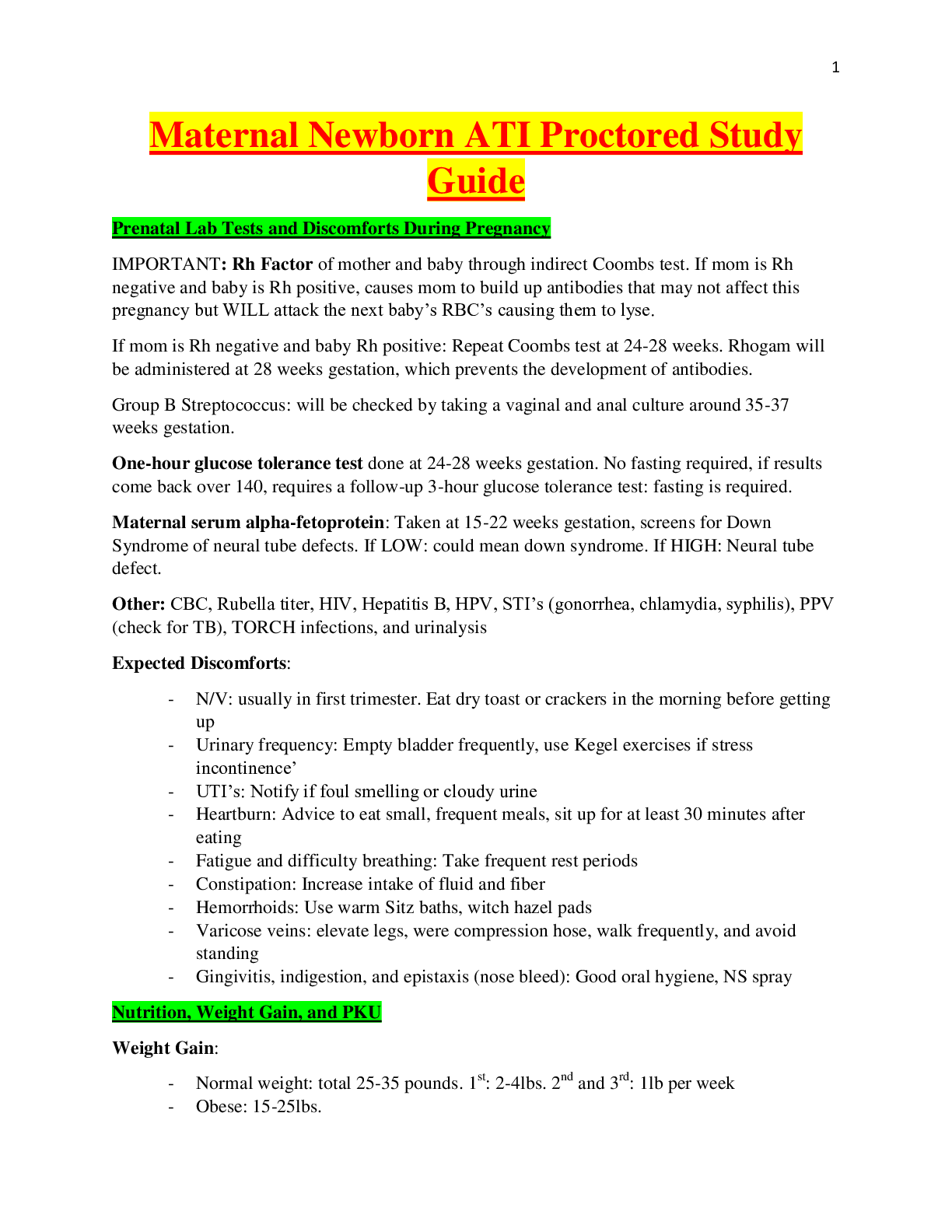*NURSING > EXAM PROCTORED > NR 341Chapter 6 (All)
NR 341Chapter 6
Document Content and Description Below
Perrin: Understanding the Essentials of Critical Care Nursing Chapter 6: Care of the Patient Experiencing Shock or Heart Failure MULTIPLE CHOICE. Choose the one alternative that best completes the s... tatement or answers the question. 1)Which of the following should the nurse identify as symptoms of hypovolemic shock? (Select all that apply.) A) A temperature of 97.6°F (36.4°C) B) A decrease in blood pressure of 20 mm Hg when the patient sits up C) Capillary refill time greater than 3 seconds D) Restlessness E)Sinus bradycardia of 55 beats per minute Answer: B, C, D Explanation: A) (Note: This requires multiple responses to be correct.) Due to decreased blood flow to the brain and peripheral areas when blood is shunted to maintain the vital organs, cerebral hypoxia occurs. The action of standing will decrease the blood to the brain by gravitational pull and will require increased peripheral resistance or cardiac output to maintain cerebral blood supply. #1 is incorrect. Fever will increase oxygen demands but is unrelated to hypovolemic shock unless prolonged fever has caused severe dehydration, reducing the circulating blood volume. Hypovolemic shock reduces temperatures by peripheral shunting of blood away from the extremities and reducing the core metabolic rate. If septic shock is present fever might be present, but it is not present in all patients with hypovolemic shock. #5 is incorrect. Bradycardia is not present. The compensatory response is to increase the heart rate (tachycardia) to circulate the blood faster to make up for the fluids that are not present in hypovolemic shock. Nursing Process: Assessment Cognitive Level: Application Category of Need: Physiological Integrity–Physiological Adaptations B)(Note: This requires multiple responses to be correct.) Due to decreased blood flow to the brain and peripheral areas when blood is shunted to maintain the vital organs, cerebral hypoxia occurs. The action of standing will decrease the blood to the brain by gravitational pull and will require increased peripheral resistance or cardiac output to maintain cerebral blood supply. #1 is incorrect. Fever will increase oxygen demands but is unrelated to hypovolemic shock unless prolonged fever has caused severe dehydration, reducing the circulating blood volume. Hypovolemic shock reduces temperatures by peripheral shunting of blood away from the extremities and reducing the core metabolic rate. If septic shock is present fever might be present, but it is not present in all patients with hypovolemic shock. #5 is incorrect. Bradycardia is not present. The compensatory response is to increase the heart rate (tachycardia) to circulate the blood faster to make up for the fluids that are not present in hypovolemic shock. Nursing Process: Assessment Cognitive Level: Application Category of Need: Physiological Integrity–Physiological Adaptations [Show More]
Last updated: 2 years ago
Preview 1 out of 28 pages
.png)
Buy this document to get the full access instantly
Instant Download Access after purchase
Buy NowInstant download
We Accept:

Reviews( 0 )
$7.00
Can't find what you want? Try our AI powered Search
Document information
Connected school, study & course
About the document
Uploaded On
Jun 08, 2021
Number of pages
28
Written in
Additional information
This document has been written for:
Uploaded
Jun 08, 2021
Downloads
0
Views
58


.png)


